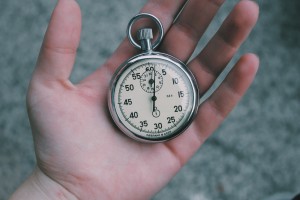Have you ever considered self-hypnosis for better decision making? There can be many reasons why we find it hard to make decisions, or that the decisions we end up making may not be the best ones. In this post I explore how self-hypnosis can be a valuable self-help tool, and help in making better decisions.
How Self-Hypnosis Can Help with Decision Making…
1. What Gets in the Way of Making Good Decisions?
There are an infinite number of possibilities why we can find it hard to make a decision, or one that we are happy with. I am going to focus on some of the areas that I see the most frequently in my practice, and then move on to exploring why and how self-hypnosis can help with making better decisions.
- Stress and anxiety – I imagine most of us at some point will have been in a situation where life was moving too fast or we were so full of worry that it was hard to think clearly. If we are facing a genuine life or death decision in an emergency, hopefully our inbuilt flight, fight or freeze response to extreme threats will serve us well. That is what it is there for. However, this is not a good state of mind for everyday and long-term decision making. Anxiety and stress can hijack our brains, reducing our capacity to think clearly and access our own resources. In his very interesting article “How Does Anxiety Short Circuit the Decision-Making Process?” Christopher Bergland writes about how anxiety disengages neurons in the prefrontal cortex linked to decision-making [1].
- Low self-confidence and self-esteem – our beliefs about ourselves and the world around us can have a huge impact on how we approach decision making. Limiting beliefs about our own worth and abilities are common and can restrict the range of choices we believe we have. It can also be valuable to check your beliefs about the way the world works. Often laid down in childhood, there will be some that probably could benefit from an update. These are the beliefs that the practitioner is listening for when people come to work with us. But a way to spot these for yourself is to look at where you struggle or feel blocked, and to consider how you are thinking about the situation. Are there things that you tell yourself that may not actually be true?
 Being too quick or too slow to react – we all have frameworks we use to create meaning and motivation. In NLP (neuro-linguistic programming) we refer to Meta Programs and this is a very interesting and useful area to explore in terms of understanding ourselves and others. If you are curious about Meta Programs Robert Dilts excellent NLP University Encyclopedia can give you some more background [2]. I shall return to this aspect of NLP in another post but this particular Meta Program is very relevant here. The key skill with most aspects of how we think and respond is flexibility. If we have a default setting that is very quick to leap without looking, or to gaze for so long that we miss the opportunity to leap – that can be problematic. Being at the extremes of pro-active or only reacting when it becomes so difficult that we are forced to act will work sometimes, but you risk losing out in all the situations where a decision was needed somewhere in-between those two ends of the spectrum.
Being too quick or too slow to react – we all have frameworks we use to create meaning and motivation. In NLP (neuro-linguistic programming) we refer to Meta Programs and this is a very interesting and useful area to explore in terms of understanding ourselves and others. If you are curious about Meta Programs Robert Dilts excellent NLP University Encyclopedia can give you some more background [2]. I shall return to this aspect of NLP in another post but this particular Meta Program is very relevant here. The key skill with most aspects of how we think and respond is flexibility. If we have a default setting that is very quick to leap without looking, or to gaze for so long that we miss the opportunity to leap – that can be problematic. Being at the extremes of pro-active or only reacting when it becomes so difficult that we are forced to act will work sometimes, but you risk losing out in all the situations where a decision was needed somewhere in-between those two ends of the spectrum.
2. Self-Hypnosis For Better Decision Making
There are a number of ways in which self-hypnosis or hypnotherapy can support us in making better decisions. Increasing our levels of relaxation and calm can enable us to access brainwave states more suited to better decision making. In my previous post Self-Hypnosis for Relaxation I write about what self-hypnosis is, and why it is good for relaxation [3].
In addition to the many health benefits of relaxation, the aim of using hypnotherapy or self-hypnosis is to access the unconscious mind. This can be our powerhouse – where we store knowledge, memories, habits, ideas, creativity and more. Accessing and working with the unconscious mind can give us the opportunity to draw on more of the resources we have. It also gives us the chance to work on updating old patterns and scripts that no longer help us move forwards in our lives.
3. Using Self-Hypnosis for Relaxation
Relaxation could be said to be a gateway to any other avenues you explore and benefits you gain from using this approach. It immediately helps your system to take steps towards a healthier equilibrium on a physical, mental and emotional level, and so is worth pursuing even if that was all you used self-hypnosis for.
Choosing the method that suits you will be best. When I show people how to use self-hypnosis we use a simple pathway that initially focuses on thinking about and visualising somewhere they really love – how it looks, sounds and feels to be there. Really enjoying and getting absorbed in that. This takes our concentration into an inner realm, away from stress and occupying our minds with something that makes us feel happy and relaxed. Our brainwaves fall into different patterns, our thoughts and the physiological changes of relaxation follow.
4. Using Self-Hypnosis to Work on Specific Blocks and Issues
When we are relaxed and in trance, whether light or deep, we have an increased connection to our unconscious minds. Whilst in this zone we can use the language of the unconscious mind to work with issues and blocks.
 And what is the language of the unconscious mind? Imagery, symbols, stories and metaphors. Think of the power of art, the meaning of a symbol to inspire or evoke fear, and the way we are moved by epic tales of struggle overcoming adversity, stories of the triumph of good over evil. This is a language we feel – this is the landscape of the unconscious mind.
And what is the language of the unconscious mind? Imagery, symbols, stories and metaphors. Think of the power of art, the meaning of a symbol to inspire or evoke fear, and the way we are moved by epic tales of struggle overcoming adversity, stories of the triumph of good over evil. This is a language we feel – this is the landscape of the unconscious mind.
The language of the conscious mind is more analytical, structured and constrained by what we know. Whilst our conscious minds are wonderful – logic does not always lead us to the positive changes we want to make. If so, we could just tell ourselves to stop any unhealthy habits, self-sabotaging behaviours or let go of negative outdated beliefs and it would all happen – just like that!
Connecting creatively with the unconscious can help us to update the way we think about ourselves and problems we are dealing with, and in so doing perhaps we give our conscious minds more resources to work with.
If anxiety, self-confidence or self-esteem are issues, for example, there are a number of ways you can work with this.
Think about how you would like to feel and set that as your next goal. Think of a time or place where you felt great, strong, confident, relaxed and calm. Relive that experience – what you could see, hear and feel. Simply run it like a film, embellish it if you like – it is your movie, you are the director. The stronger and more positive you make it, the more powerful the message and update for your unconscious to work with.
You can pick a suitable visual image, story or metaphor – see and feel the grounded strength of a mighty oak tree, the calm or strength of a person your know or a film character you admire. Or, perhaps place yourself in a film or story that represents how you feel – one where good ultimately prevails. See yourself in the future – being exactly how you would like to be. You may imagine and give yourself the experience of being the oak tree growing or a tightly folded flower bud opening petal by petal to fully blossom.
Whatever you need to access more of, simply think of an image or story that represents it, as that is what will speak to your deeper self. Feed that in and it can nourish you. Work with one goal at a time over a period of weeks and see how you respond. Update and refine so that you are moving forward with using self-hypnosis to help work on the issues that have been getting in the way of making better decisions.
There is a lovely little book called a “Pocket Guide to Self-Hypnosis” by Adam Burke [4] that can give you plenty of ideas around how to use the wonderful life tool.
5. Helpful Ideas to Focus Using Self Hypnosis for Better Decision Making
Hopefully the previous sections have given you some ideas for using self-hypnosis to relax, and checking around blocks and issues that may be getting in the way of good decision making. Here are just a few ideas to try out that focus specifically on the process of decision making itself.
- Consider how you make decisions, when they flow and when they feel hard. What do you struggle with? What would you like to change?
 Imagine the situation and zoom out from it, gain perspective from a height, see the big picture. If it helps, zoom in and explore areas in detail. You might find my post on NLP Chunking Explained useful to refer to if this idea appeals to you [5].
Imagine the situation and zoom out from it, gain perspective from a height, see the big picture. If it helps, zoom in and explore areas in detail. You might find my post on NLP Chunking Explained useful to refer to if this idea appeals to you [5].- When you have found your relaxed and favourite “place” in your self-hypnosis you can also have fun with worst case and best case scenarios. Use the insights and information that throws up to help you explore the possible options and outcomes. See it as a TV programme or film and just run with possibilities in a positive and curious mode.
- Think of a person you admire – how would they approach this…?
- Exploring the situation from an objective stance, hold an imaginary conversation with the key protagonist(s).
- Imagine the future having made the decision to explore the outcome and flush out different options.
- You may also wish to consider the speed and flexibility of your decision making – what might be a good way to explore enhancing that?
- Explore possibilities indirectly by imagining scenarios with variety such as flowers in a field, fish in the sea, etc. If you know what you are taking into your self-hypnosis session, your unconscious mind will join the dots, you don’t always need to tackle issues head-on for answers to float to the surface.
6. When to Use Self-Hypnosis for Better Decision Making
There are huge health and well-being benefits to increasing your level of genuine relaxation. This is a great place to start – practice using a method in a way that feels right for you. Then build in more aspects to work with issues or blocks, so that you can then make the most of specific decision-making approaches.
Generally it can be helpful to begin by doing a little and often – maybe just 5 or 10 minutes in a quiet moment a few days a week. See how you respond – lay some good foundations, build your house and visit when-ever you like.
For me, one of the lovely spin-offs from using self-hypnosis and hypnotherapy is that we access more of our inner resources. It may help with issue you are specifically working on, and what I have found personally and with some clients is that it also brings along all sort of other benefits.
These benefits can sometimes be generalised, moving through other areas and issues as you work with old patterns and update. You can than find that as you work with one area it has knock on effects in another – issues are often nested, like Russian Dolls.
 Using self-hypnosis and hypnotherapy allows us to draw upon more of ourselves. We may discover an extra clarity or depth that feed into our decision making process. There may be insights as we reach into our deeper selves, synthesising our knowledge, intuition, experience and creativity. Albert Einstein used hypnosis and developed his theory of relativity during such sessions. Even the work of such an incredibly able and intelligent conscious mind was enhanced by explorations into the unconscious [6].
Using self-hypnosis and hypnotherapy allows us to draw upon more of ourselves. We may discover an extra clarity or depth that feed into our decision making process. There may be insights as we reach into our deeper selves, synthesising our knowledge, intuition, experience and creativity. Albert Einstein used hypnosis and developed his theory of relativity during such sessions. Even the work of such an incredibly able and intelligent conscious mind was enhanced by explorations into the unconscious [6].
There are refinements that can add to the depth and power of this approach, and generally people find it to be very enjoyable and that they can learn self-hypnosis quite easily and quickly. You can choose a method along the lines above, or any number of other ways. The process itself needs to be enjoyable and relaxing – so it’s important to pick something that feels right for you. My advice would be to set relaxation as your goal to begin with. Simply practice getting really relaxed. From there you can build upon self-hypnosis techniques and using self-hypnosis for better decision making.
If you have any queries about using self-hypnosis for better decision making, learning self-hypnosis or one-to-one hypnotherapy please contact me for more information.
References and Resources:
[1] How Does Anxiety Short Circuit the Decision-Making Process?
[2] NLP University Encyclopedia – Meta Programs
[3] Self-Hypnosis for Relaxation
[4] Pocket Guide to Self-Hypnosis by Adam Burke, The Crossing Press Pocket Series, 1977
[6] Why Einstein used Hypnotherapy

